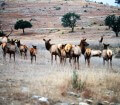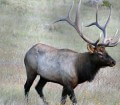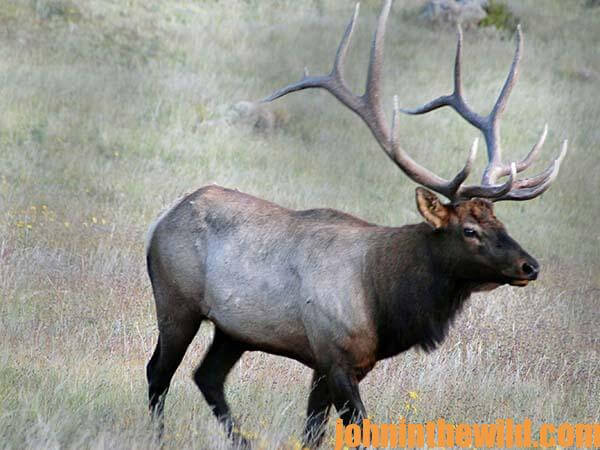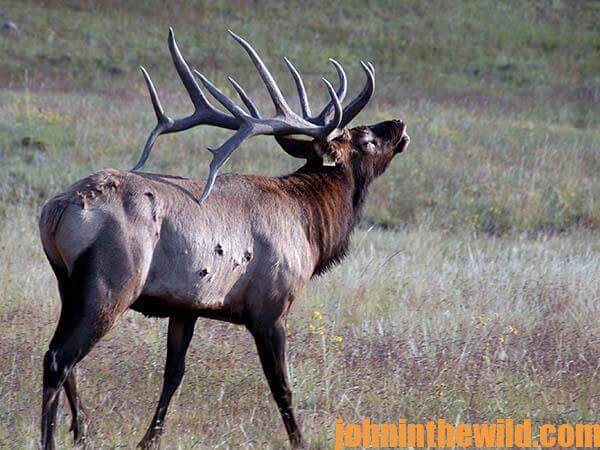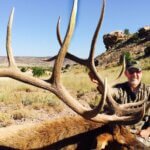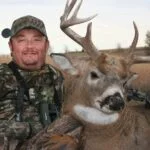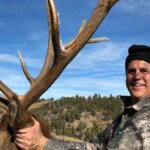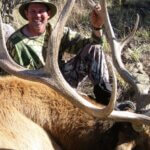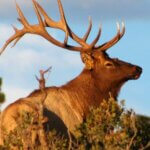John’s Note: J.R. Keller has lived in Colorado most of his life. During hunting trips with his father, Keller realized a passion for turkey hunting, which consumed most of his free time. Keller soon became an avid turkey caller and has won numerous turkey-calling competitions, besides elk-calling contests. Known for his knowledge of hunting elk, turkeys, mule deer and waterfowl, Keller has appeared on many TV shows. 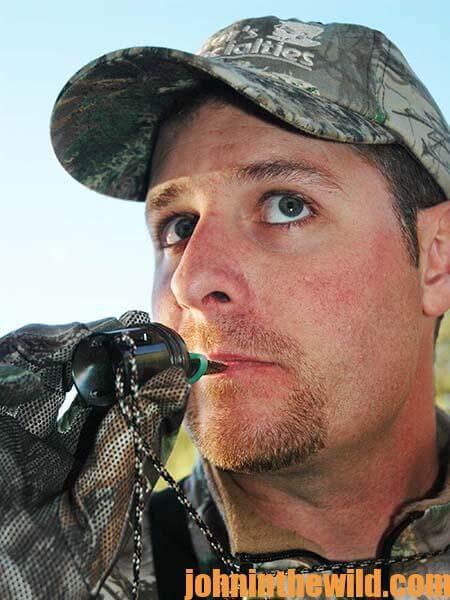
John E. Phillips: What is tip 6 for hunting elk?
Keller: I think many people underestimate the big role scent elimination plays in your success in the woods. Some hunters think if they hunt into the wind, they’ll be okay. That’s a great idea, but the wind only blows one way in the West, and that is the wrong way. It’s hard to consistently hunt into the wind, because you are continuously moving, and the wind is changing directions. I usually spray down with Hunter’s Specialties Scent’s Scent-A-Way liquid once in the morning, and I carry Scent-A-Way Wash Towels with me. I use the wash towels to wipe off my face, under my arms and around my neck, which helps keep me as scent-free as possible.
Phillips: Most hunters spray down once in the morning. Should they bring a bottle with them?
Keller: Yes. Keep a small bottle of Scent-A-Way in your pack. This will allow you to spray down after you’ve set-up, so that you are as scent-free as possible.
Phillips: What is tip 7 for hunting elk?
Keller: In addition to a scent eliminator, also use cover-up spray. Hunter’s Specialties also makes several masking scents that I use, like Scent-A-Way plus Fresh Earth and Scent-A-Way plus Acorn Spray. I also use a lot of liquid scents. If I am set-up on an elk and he’s coming in, I’ll spray Hunter’s Specialties Scent’s Cow Elk Urine mist. I do this for several reasons; first, when the elk is coming in, if I spray a mist, I can see which way the wind is blowing. Too, the mist will be the first thing the elk will smell. When it smells the cow urine scent, the elk will curl his nose and come on in to where I’m waiting.
Phillips: When you know the wind is blowing in a certain direction, and the elk is going to come in downwind from you, do you try and move downwind also to get ahead of the elk?
Keller: Sometimes regardless of what you do, an elk will come in downwind from you, and you can’t do anything about it. That’s when you have to depend on your scent-elimination products and lures. When an elk is coming in downwind, you have no choice but to depend on the odor eliminators you‘ve brought with you and the cover-up scents you use. That’s the reason I rely heavily on the Cow Elk Urine mist, so hopefully the cow will smell the cow urine and not smell me.
Phillips: What is tip 8 for hunting elk?
Keller: Some hunters believe that using elk calls during rifle season is not effective, because by then often the elk have quit bugling. Using elk calls during rifle season can be very effective, because elk communicate with each other throughout the year. So, if you communicate with them, they’ll respond. They may not respond vocally, but they may come in silently. Another big mistake that elk hunters often make is that they sound like elk hunters when they’re walking through the woods. To solve this problem, if I am moving into an area, I use a call that sounds like an elk to mask my human sounds. I also use my calls when I have elk moving through my area to within gun range. I want to stop the elk, so I’ll use an elk call to get the elk’s attention to make them quit moving long enough for me to get off a good broadside shot.
Phillips: For tip 9, tell us if you have a big bull elk coming in, and he doesn’t see you, but he spooks, what do you do?
Keller: The first thing I do is call to him. Calling often will calm an elk down. If the elk doesn’t know what’s spooked him is a hunter, he’ll begin to wonder if maybe there’s another elk in the area, and he’ll calm down. Every time I shoot, I will call a bugle or a cow call to calm the elk in the area.
Some years ago in New Mexico, I shot right over a bull and hit a pine tree behind him. He spooked a little bit, and I used a cow call to calm him down. The calling allowed me to get another shot, and I harvested that bull. Often, when I shoot at an elk, I’ll spook him. In this situation, he didn’t see me but he heard the report of the rifle. So, when the elk runs out about 20 yards, I’ll call to him. My calling usually will stop the elk, calm him down and let him know that everything is okay. When the elk is calmed down, I’ll let him get out of range and then reposition myself for another shot. I don’t want to stay in the same spot that I’ve taken the first shot from, because I may have fooled him once, but I won’t be able to fool him from the same spot twice.
Phillips: Can you tell us for tip 10, if you are calling to a bull and he hangs-up, how do you get him to come on in to within range?
Keller: Usually the reason a bull hangs-up if you’ve called to him is because he thinks you’re a cow, and he’s expecting you to come to him. Many times I will get a bull hung-up, usually around 70- to 80-yards from me. When this happens, I will back off my calling, or I will try and double-team the elk. If I’m calling for another shooter, I’ll leave the shooter where he is and begin to call walking away. A lot of times if I sound like a cow elk leaving, the bull will become extremely curious and begin to follow me and walk right into my hunter.
Phillips: Can you give our readers an extra tip? If you’re hunting by yourself, how can you make the elk think you’re walking off when you’re not?
Keller: I throw my call behind me. Most of the time, you call directly to the elk and aim your call at the elk. If you want the elk to think you’re walking away from him, turn your head around and throw the call behind you. This way, the sound of the call appears to be coming from an elk that’s leaving your position and going in the other direction. One of the most-effective ways to get this call, so you don’t have to turn around, is to use a grunt tube with a diaphragm call. Then you can point the barrel of the tube behind you, and it will give the sound of an elk leaving.
To learn more about elk hunting, click here to get John E. Phillips Kindle eBooks “PhD Elk”, “Secrets for Hunting Elk”, and “How to Find Your Elk and Get Him in Close”
About the Author
John Phillips, winner of the 2012 Homer Circle Fishing Award for outstanding fishing writer by the American Sportfishing Association (AMA) and the Professional Outdoor Media Association (POMA), the 2008 Crossbow Communicator of the year and the 2007 Legendary Communicator chosen for induction into the National Fresh Water Hall of Fame, is a freelance writer (over 6,000 magazine articles for about 100 magazines and several thousand newspaper columns published), magazine editor, photographer for print media as well as industry catalogues (over 25,000 photos published), lecturer, outdoor consultant, marketing consultant, book author and daily internet content provider with an overview of the outdoors. Click here for more information and a list of all the books available from John E. Phillips.

